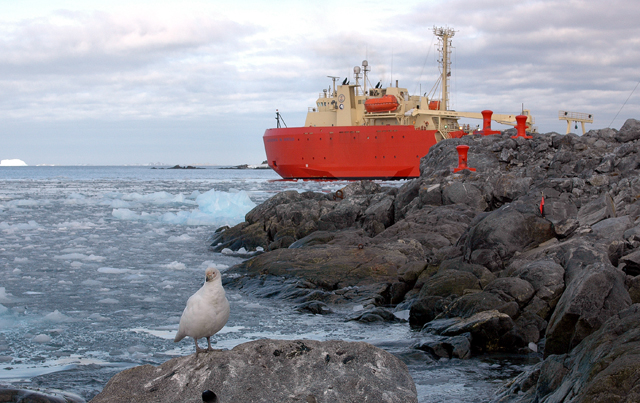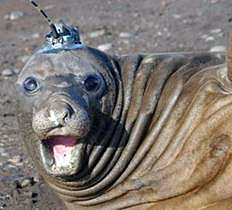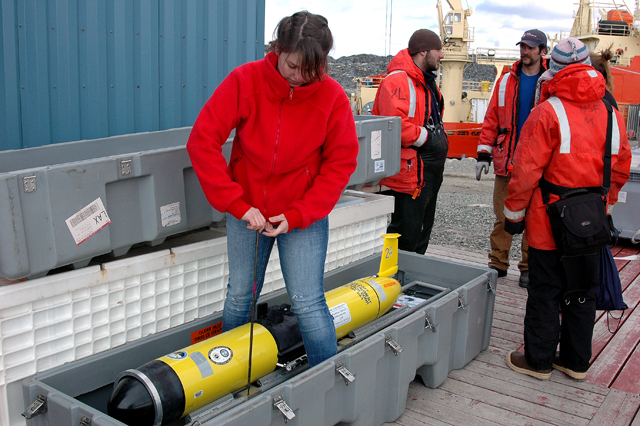Ocean observationsPalmer LTER scientists call for new strategy to take measurementsPosted July 2, 2010
Underwater robots and marine animals outfitted with scientific sensors are part of a proposed strategy for monitoring polar oceans into the 21st century, particularly a stretch of sea along the western Antarctic Peninsula, which is undergoing rapid climate changes. The proposal comes in the June 18, 2010 issue of the journal Science by a group of scientists who conduct research in Antarctica, most of whom currently work on the Palmer Long Term Ecological Research (PAL LTER) program Since 1993, the PAL LTER has monitored the region near the U.S. Antarctic Program’s Palmer Station For example, midwinter surface temperatures have increased by about 6 degrees centigrade in the past 50 years. Eighty-seven percent of the western peninsula glaciers are in retreat, and the sea ice season has shortened by nearly 90 days. In their report, the scientists describe a multi-faceted approach to ocean observation, using glider robots that measure ocean characteristics continuously for weeks at a time and tourist vessels, ferries, and other “ships of opportunity” outfitted with chemical and biological sensors. In the last few years, the PAL LTER program added autonomous underwater vehicles called Slocum gliders through a group from Rutgers University “In just the first few weeks that we had the glider out last year, we collected as much data as the cruises had collected since 1993,” said Hugh Ducklow The authors also suggest outfitting oceanographic instruments on animals such as elephant seals and penguins to provide information on animal behavior and oceanographic conditions. Recent tagging of Adélie penguins nesting near Palmer Station has helped scientists understand the link between nutrient upwelling in underwater canyons and where penguins forage. “We’re looking for ways to use our existing capabilities to obtain data,” said Ducklow, director of the Ecosystems Center at the Marine Biological Laboratory (MBL) The authors concede that deployment of the observational systems will “require international cooperation given the scale of effort required; however, because many of the technologies have been demonstrated to be effective it is not unreasonable to believe that these networks could be deployed in five to 10 years. “The benefits of better understanding the marine ecosystem, and being better able to predict, protect, and make use of its resources, are strong drivers to make this a reality.” NSF-funded research in this story: Hugh Ducklow, Marine Biological Laboratory, Award No. 0823101 |



For USAP Participants |
For The Public |
For Researchers and EducatorsContact UsNational Science FoundationOffice of Polar Programs Geosciences Directorate 2415 Eisenhower Avenue, Suite W7100 Alexandria, VA 22314 Sign up for the NSF Office of Polar Programs newsletter and events. Feedback Form |




